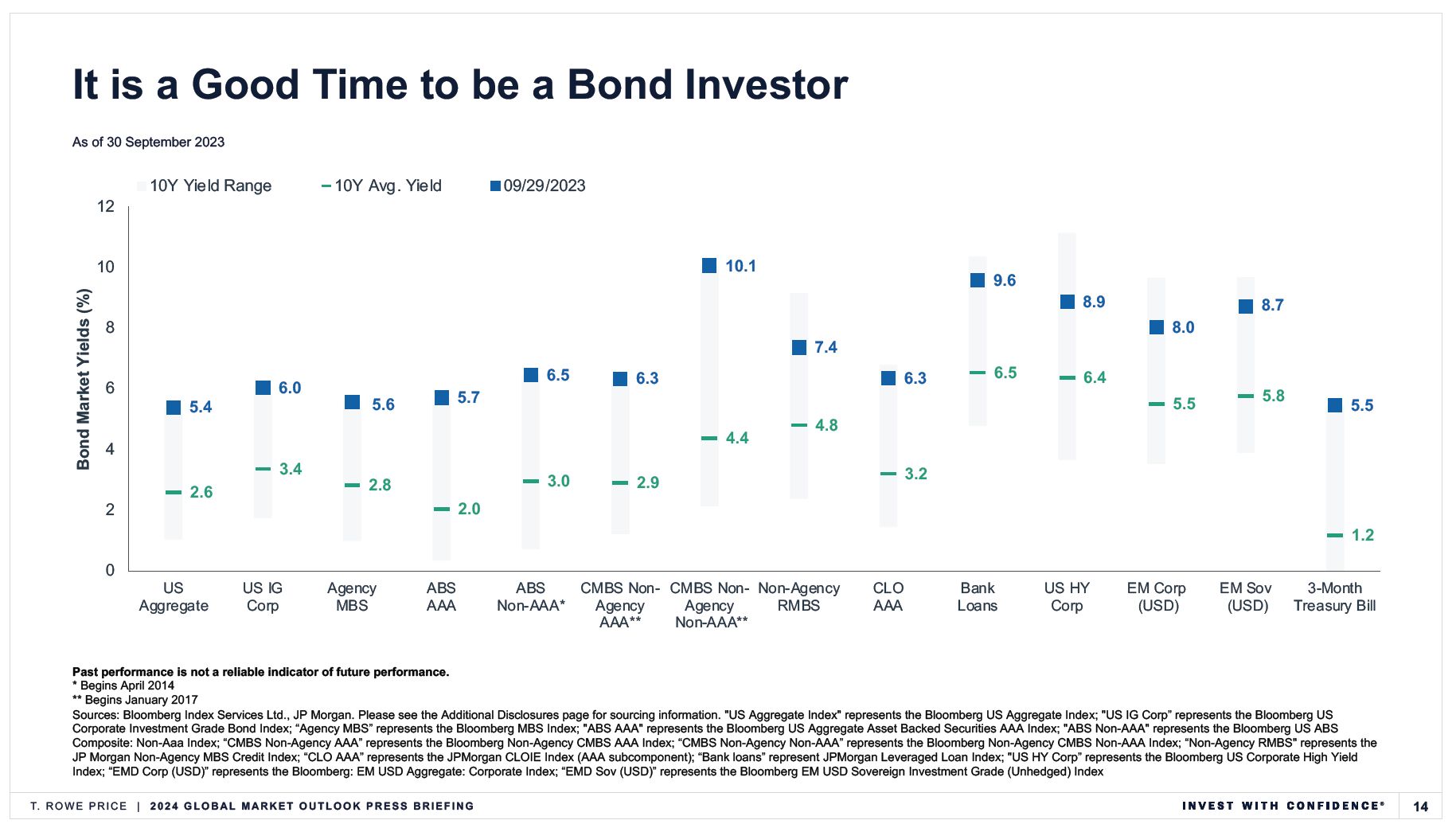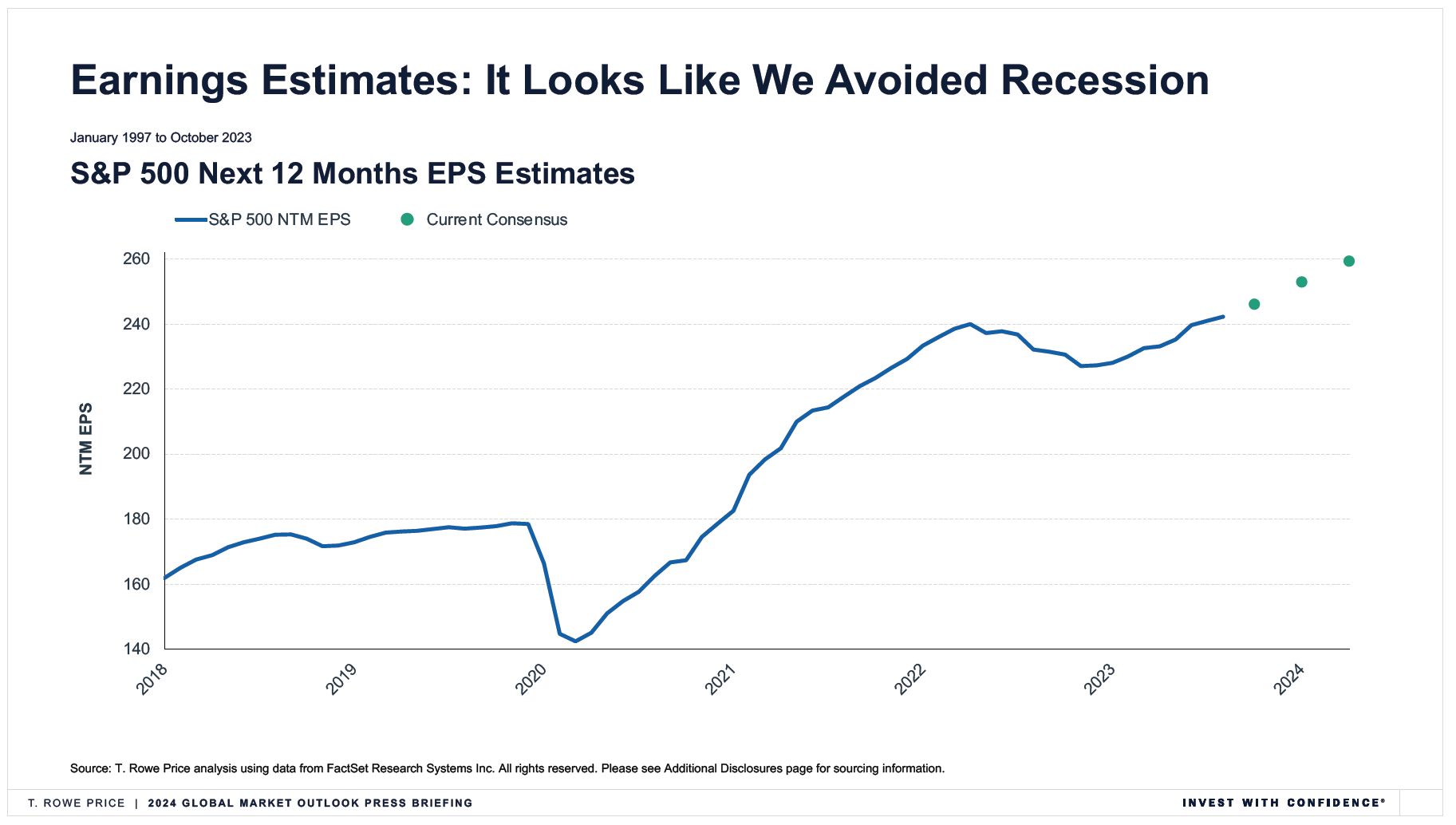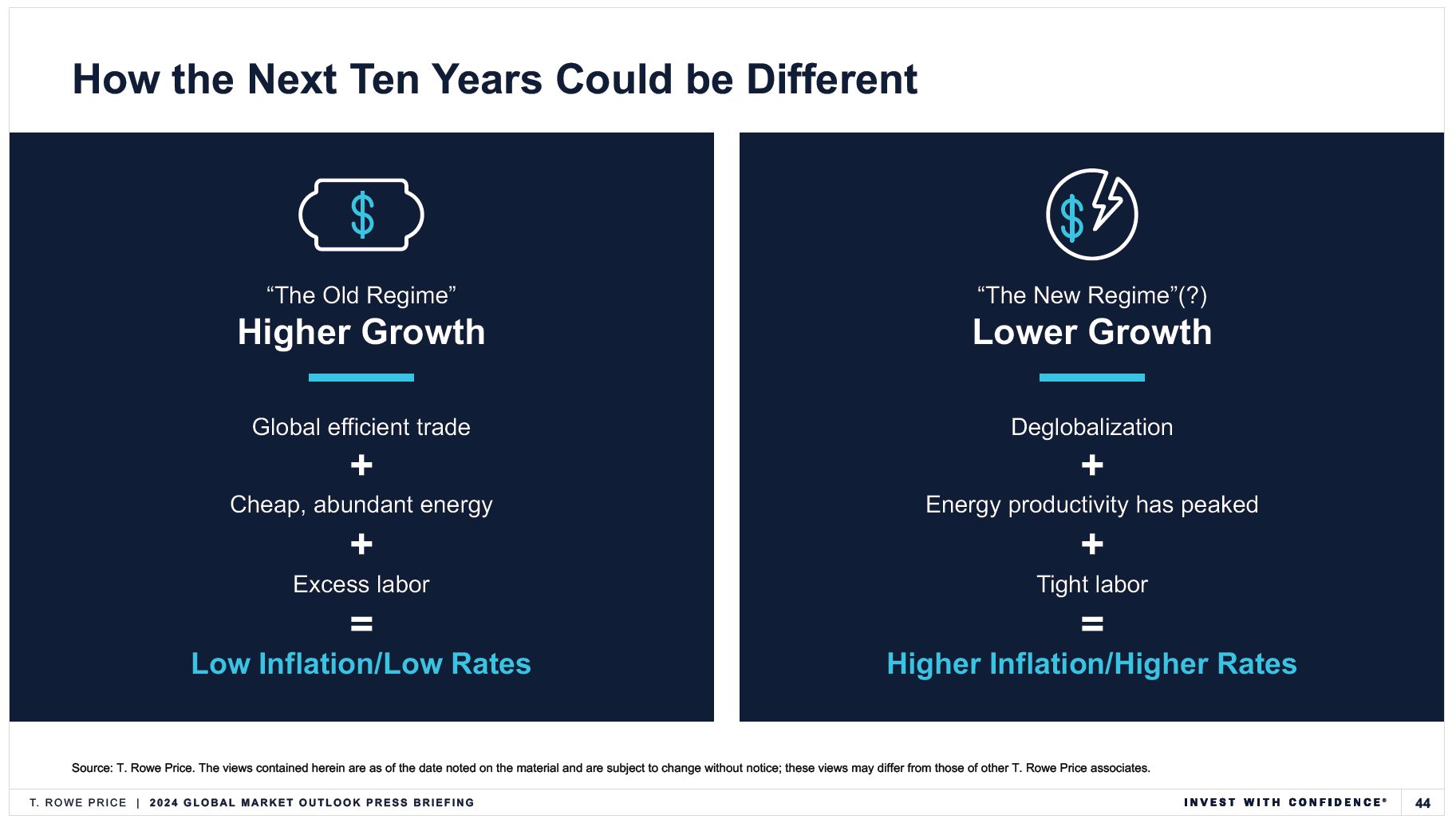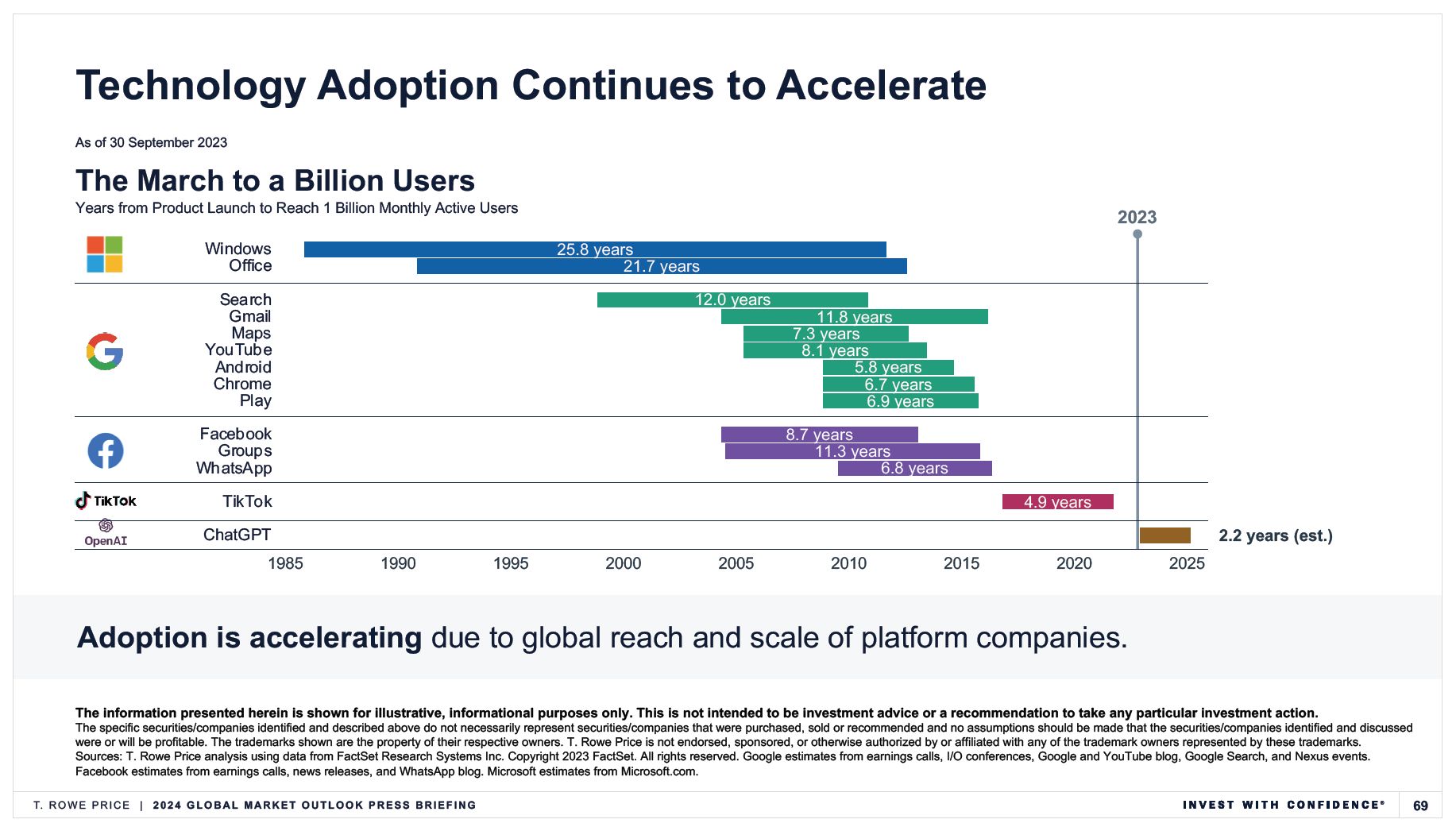New regime of 'higher for longer' inflation, elevated interest rates, and slower economic growth are setting the context for stock and bond markets

North America will see high deficits and debt levels going into 2024, but this will create opportunities for investors.
Speaking at the T. Rowe Price ‘41st Annual Global Market Outlook’ press briefing, Steve Boothe, portfolio manager, head of global investment-grade debt, fixed income division, at T. Rowe Price, says, “Fixed income markets currently exist in a fragile equilibrium but the historic selloff in bonds in 2022 has created opportunities for all types of investors. Short duration and intermediate duration high-quality assets, among other sectors of the bond market, offer both income and the potential for price appreciation.”
Boothe say that in the US, high-quality yields are attractive, but economic growth will eventually succumb to the hiking cycle – the time period between the month of the first hike until the month before the first cut – so a mild recession is still possible. “The open question is when, and to what degree.

“It’s a good time to be a bond investor, but it’s a complicated environment,” he says. “The temporary benefits of looser financial conditions and US fiscal spending in 2023 will soon wear off. We have reached ‘peak everything’ – as all the factors (fiscal policy, liquidity, China growth, housing, credit, and employment) that have contributed to the global economy’s resilience are showing signs of weakness.”
Boothe believes that liquidity remains a concern. “Money markets have absorbed the heavy supply of US Treasuries in 2023, but Treasury supply in 2024 is expected to remain heavy due to deficit spending, so that capacity for absorption is likely to change.
Investors must account for inflation and recession risk
The US may well avoid a recession but that there will be no real recovery until the US government pivots, says Tim Murray, capital markets strategies, multi-asset division, with T. Rowe Price. “In the meantime, investors’ portfolios need to account for both inflation and recession risk.”

Murray says the global market environment is now in a state of purgatory, with continued uncertainty about both inflation and recession risks. Stock/bond correlations are constantly shifting, so “investors need to hedge their bets accordingly, taking advantage of attractive yields while choosing their stock, bond, and real asset allocations wisely.”
To be prepared, T. Rowe Price multi-asset portfolios are positioned around four themes:
- Recession uncertainty – overweight cash for liquidity and flexibility;
- Attractive yields – overweight high yield, floating rate, and emerging market bonds;
- Inflation mitigation – overweight real assets as a hedge against sticky inflation; commodity and real sectors attractively priced; and
- Selective opportunities – overweight small cap amid stabilizing earnings estimates and attractive valuations.
Global equities and the evolving new regime
The market environment in the next 10 years could be fundamentally different than the pre-pandemic period, transitioning from a higher-growth regime supported by low inflation and low interest rates to a new, lower-growth regime characterized by higher inflation and higher rates, says Peter Bates, portfolio manager, global select equity strategy, equity division, at T. Rowe Price.
“The old, pre-pandemic regime – characterized by efficient global trade, cheap abundant energy, and excess labour – was supported by low inflation and low interest rates. Fast-forward to today and we see a new regime unfolding, characterized by deglobalization, peaking energy productivity, and tight labour, likely to result in higher-for-longer inflation and interest rates.

“Equities are still the best place to be for the long term, but the playbook that worked for the last 10 years won’t work for the next 10. In a more uncertain environment, valuations will become even more important.”
Bates says that a sensible investing approach to generating excess returns in the new regime is to balance growth and value style factor tilts, to invest in durable growth themes, to balance recession and macro risk, and to find companies with a positive catalyst for change.
“In an uncertain world, areas of investment opportunity include artificial intelligence (the semiconductor ecosystem and AI infrastructure), healthcare innovation (obesity drugs and bioprocessing), and residential and commercial construction.
Artificial intelligence offers investing opportunities
Dom Rizzo, portfolio manager, global technology equity strategy, equity division, with T. Rowe Price thinks artificial intelligence (AI) may be the biggest technological innovation since the advent of electricity and believes this technology provides investment opportunities.

“Artificial intelligence is a big deal, in both the boardroom and in the public’s imagination. We can all feel it – AI is going to proliferate in nearly every facet of our daily life. This unique technology has the potential to be the biggest productivity enhancer for the global economy since electricity, and we’re positioning our strategy to navigate this rapidly changing environment responsibly.”
He says the digital semiconductor ecosystem remains the most attractive place for investors in tech. The total addressable market for AI chips is expected to rapidly grow from $30 billion dollars this year to $150 billion in 2027, an approximately 50 percent compound annual growth rate (CAGR). “This AI buildout is completely revolutionizing the $1 trillion data centre market. Digital semiconductors provide the linchpin technologies that will power this artificial intelligence revolution.”
He adds that AI is a sustaining innovation and benefits those companies that already have the compute resources, talent, data, and distribution. “The big may still get even bigger.
“There is no shortage of places to look for good ideas that benefit from this and many other megatrends. The global technology opportunity set extends across all geographies, all markets, and all major subsectors of tech – hardware, software, internet, and payments.



